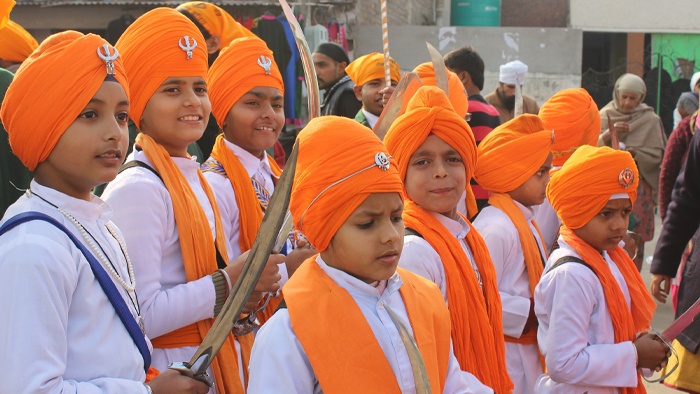Perspective: Sikh Americans Defend Religious Freedom For All

Since the 1850s when Asians began immigrating to the United States in large numbers, they have contributed to American society in profound ways. Yet few know how this diverse group, which includes Americans tracing their heritage to any of nearly 50 countries from India to Japan, has fought for the rights of all Americans to live according to their deepest beliefs.
Throughout our country’s history, Asian American communities have brought religious freedom cases to the courts and won not just for themselves, but for the benefit of all. In standing up for their religious beliefs, they’ve strengthened the shield of religious liberty, protecting every American’s First Amendment right to freedom of conscience.
Take Simratpal “Simmer” Singh, who was accepted to the U.S. Military Academy at West Point in 2006, where he began a distinguished military career.
As a practicing Sikh, Singh had worn a turban and beard for years, but the Army’s ban on long hair and beards meant he had to choose between military service and his deepest beliefs. Singh chose his country and served for a decade before challenging the policy under the Religious Freedom Restoration Act, which requires the government to have a compelling reason to limit free exercise rights.
Sikhism is one of the world’s largest religions. It has deep roots in Indian history and culture. An estimated 500,000 believers, mostly Indian American, live in the United States. Sikhism emphasizes equality and service to others, and Sikhs have played important roles in American communities since practitioners first arrived in the late 1800s. Physical articles of the Sikh faith include: kanga, a small comb; kara, a steel or iron bracelet; kachera, undergarments; kirpan, a ceremonial knife; and kesh, uncut hair. Many Sikhs also wear a turban, a long strip of cloth that is wrapped around their unshorn hair.
While Capt. Singh’s particular faith may be unfamiliar to most Americans, many of us can empathize with wanting to believe and practice our beliefs without interference.
The courts agreed with Singh, and in 2017, the Army issued new guidelines that allow Sikhs to serve without having to abandon their articles of faith. Because of Singh, millions of Americans, Sikh or otherwise, can fully practice their faith while enlisted.
Twenty years earlier, Sikh families in California set a similar precedent. In the 1990s, laws and policies against weapons on school grounds became stricter. California’s Livingston Union School District suspended Rajinder, Sukhjinder and Jaspreet Cheema, three Sikh siblings, after they wore their kirpans to schools. The kirpan is a short, curved blade worn by many Sikhs to symbolize their duty to defend the oppressed.
You might agree the school district had a responsibility to keep students and staff safe. But would safety mean banning Sikh practice?
The Cheema family pushed back, demonstrating that other districts accommodated kirpans by riveting blades to their sheaths. They pointed out the Livingston Union School District could do the same. Since then, the Cheemas’ story has been an example of how students can stay true to their beliefs while getting a public education.
Despite the many narratives pitting our identities against one another, our own rights are strengthened when we stand up for the rights of people who look and think differently than us.
Indian Americans like Capt. Singh and the Cheemas fought for their right to be both fully Sikh and fully American. In doing so, they protected the rights of any believer to do the same. Their struggle is not unique to Sikhism; Buddhist, Muslim and Christian Asian Americans have likewise brought challenges and won protections for their own faiths and any other.
As they demonstrate, being an American means you do not have to choose between your deepest beliefs and serving your country or between your god and your education. Americans who use their First Amendment rights as a shield to protect themselves and those with different beliefs should be celebrated.
David Callaway is the former religious freedom specialist for the Freedom Forum.
Rev. Dr. William J. Barber II: Honoring Decades of Courageous Acts of Free Expression
17 Religious Movies That May Change Your Perspective
Related Content

